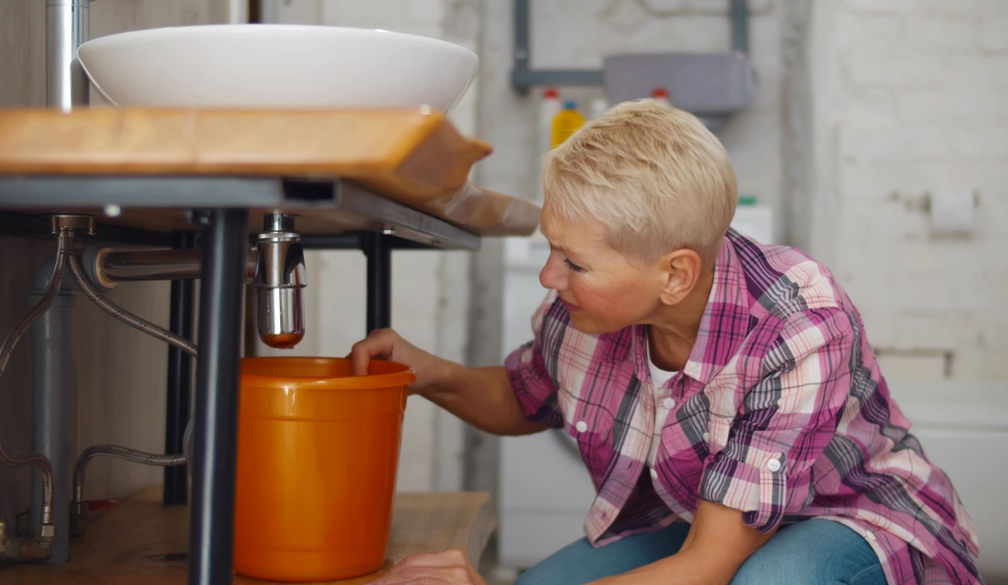Top 4 Plumbing Problems In Old Homes

Most people prefer living in an older home for various reasons. A few people may be obsessed with the historic appeal or character of a structure unique to its time. Others may not have the budget for newer, more modern homes and settle with a fixer-upper that fits the bill. For some, it’s where they grew up and built their family.
Regardless of the reason, choosing to live in an older home comes with a fair share of quirks and frustrations. Thus, it’s best to know what to expect, especially regarding the innards of a home. One such thing to worry about is the plumbing system.
In this article, we share a few plumbing problems you may encounter in an older home.
- 1. Outdated, Worn Pipes
The plumbing system in older homes is constructed using outdated pipe materials. In particular, houses built before the 90s may have used pipe materials no longer approved by most local building codes. Some of these materials include:
- Lead
Lead is one of the oldest metals used in piping. Thanks to its durability and malleability, lead was used extensively for sewer and main water lines and pipe fittings. However, lead was discovered to be highly toxic, causing various health issues, including constipation, fatigue, decreased fertility, anaemia, and memory loss. In children, it causes serious issues with mental and physical development.
Generally, you can’t taste, see, or smell lead in drinking water. Experts recommend calling a plumber like Dan’s Plumbing to check your lines and test your water. If your old home has lead service lines, they must be replaced immediately.
- Galvanized Steel
Less popular than lead, galvanized steel later replaced lead in the 60s. It featured a protective zinc coating to enhance the durability of the pipes. However, when zinc erodes, the steel metal can corrode, causing a higher amount of rust in your drinking water. The corrosion also makes quick work of the material, causing the old pipes to break and create significant damage.
- Polybutylene
After galvanized steel, polybutylene became a popular pipe material in older homes. Unfortunately, experts found that this plastic piping doesn’t react well with oxidants in most municipal water systems. This leads to the pipes breaking and cracking prematurely.
- 2. Shifting Pipes
A home shifts and settles throughout the years. Thus, most pipes installed underneath your home can also move downward, creating negative slopes known as pipe bellies. Please note that bellies are a primary concern in your sewer lines.
This slope creates a narrower area, restricting water flow and causing blockages. Eventually, the area gets blocked completely, creating pressure within the pipes and causing more severe issues such as leaks and backup. The gradual movement throughout the years also puts pressure on connecting joints and increases the risk of burst pipes.
- 3. Antique Fixtures
One of the most appealing aspects of an older home is its antique fixtures and faucets. However, although they may provide a vintage touch to your home, older fixtures mean they probably won’t last that long. Wear and corrosion on plumbing fixtures also cause frustrating issues such as leaks, clogs, or low water pressure, making using water inconvenient.
- 4. Sewer Line Malfunctioning
The sewer line may be out of sight, but it shouldn’t be out of your mind, especially for older homes. Generally, your sewer line system will face more challenges as it ages. From accumulation of clogs and sediment build-up to root intrusion, a failing sewer line can cause numerous issues to your home.
For instance, serious clogs can cause your sewer line to back up, causing irreversible water damage and health hazards. Meanwhile, root intrusion can result in severe water leaks and wreak havoc in and out of your home.
So, suppose you ever smell foul odour outside, unexplained soft spots, or puddles in the yard or a more visible back up waste water to any of your drainage systems. In that case, it’s essential to call a plumber immediately to resolve the issue.
Takeaway
Older homes do have their own antiquated charms. However, if you choose to live in an older home, then you should be prepared to deal with several issues, one after another, especially the plumbing issues mentioned above.
While older homes often have several complications due to their old age and outdated materials, nowhere is more stressful than dealing with plumbing issues. So, consult a plumbing professional to thoroughly inspect and regularly maintain an old home’s plumbing system and make the necessary fixes. This way, you can truly enjoy the charm of an old home without the headache.




